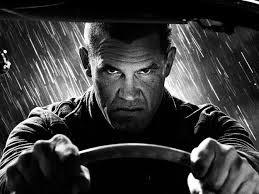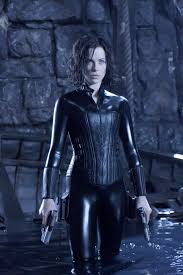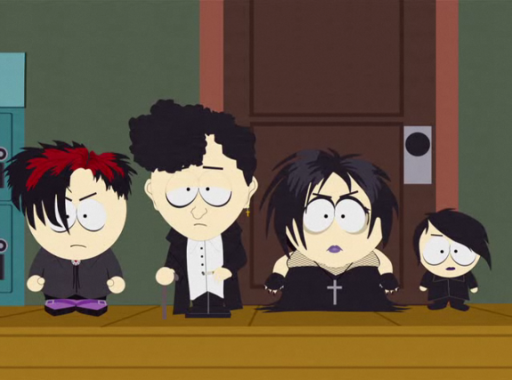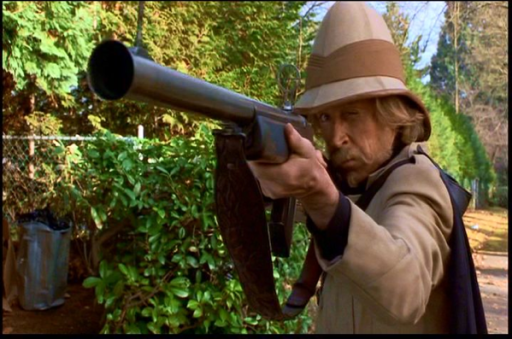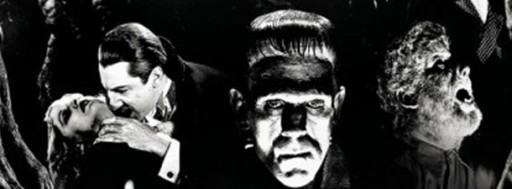Editor’s Note: The article was updated to correct some publication dates.
![]()
You Should Go Back To Playing…
The World of Darkness
The sound of the rain drowns out nearly every other sound in the city, save for the distant wail of a siren. It is not crying out for you, in this latest act of depravity in the name of survival. What is done in the shadows of this city stays there, and the police are in too many pockets to change that. As their body cools upon the uncaring asphalt of this stretch of urban desolation, you pause a moment to consider it. Moments ago, it had been a life, something considered precious and unique in some circles.
Now, it is a corpse, unremarkable save for the way the rain seems to pound little divots into its soaked-through clothes. Funny how these two extremes lie so very close at hand. Life and death. Light and shadow. You step out of the darkness and into the bleeding-yellow lights of the city again, vanishing into the press of the anonymous crowd, already forgetting the horror you caused just moments before. It was just another meaningless life lost, uncounted and unmourned in the city’s night.
The scene above comes straight out of a film noir, but it also has a home in the many forms of urban fantasy that have cropped up in the last two decades. It tells a familiar story, of troubled anti-heroes struggling against a titanic, seemingly purposeless world, driven towards their own inevitable destruction by forces beyond their control, forces just as often internal as external.
The details of film noir vary from source to source, but the narrative remains the same. It is just as compelling today as it was in the 1940’s, and its mechanisms of storytelling are alive and well in roleplaying games. However, despite the many excellent RPGs focused around film noir stories, it is often the World of Darkness line of RPGS that capture what truly appeals about these stories, and that is why you should come back to the World of Darkness.
The Beginning
What started in 1991 with Vampire: the Masquerade, written by Mark Rein-Hagen and released by White Wolf Publishing, created a world which embraced the gothic-punk zeitgeist with gusto. Combining the nihilistic grunge aesthetic with the hollow glitz and sparkle of the nascent clubbing scene, Vampire: the Masquerade drew audiences with its blend of Anne Rice’s sexy, tormented immortals and Near Dark’s savage beasts. “Monsters we are, lest monsters we become” crafted an image of the vampire which shaped the imaginations of a generation of gamers, an image which spread out of the gaming circles it started in.
The modern urban vampire of Hollywood, shown in films like Underworld, True Blood, and even Twilight owe much of its existence to the influence of Vampire: the Masquerade. It is by far the most successful game of the line and led to the creation of two award winning video games, a collectible card game, and even one (albeit terrible) TV series.
While Vampire: the Masquerade was the first game in the World of Darkness line, there are many which are just as influential. Werewolf: the Apocalypse focused on telling a story of noble warriors, waging an impossible war against an unbeatable foe at the end of the world.
Although Vampire did tell of the Final Nights in its many prophecies, it was Werewolf: the Apocalypse that devoted its life to the existential dread growing at the nearing millennium, holding it alongside the same environmental activism that lead to people chaining themselves before bulldozers in order to protect the habitats of endangered birds. In Werewolf, the forces of corporate greed and existential annihilation were one and the same, united under the monolithic banner of corrupting entropy known as the Wyrm. The Garou were the warriors of Gaea, who have gathered after many failures to make a noble last stand to save the world.
The Teenage Years
While both Vampire and Werewolf were very much products of their time, and exploded in popularity as such, it was with Mage: the Ascension that the World of Darkness line truly came into its own. It held the same great monolithic feel of its two predecessors, but cast its protagonists as the heroes in a story of freedom and hubris.
Mage: the Ascension challenged its players to conceive of a world where, truly, their imagination was their only limit, and then locked them into a war with an embodiment of the established order. The shadowy puppet masters behind every conspiracy theory guided the world by warping reality towards a cleaner, sanitized destiny. Any who opposed them would be removed by nameless men in black hats and mirror shades. As a Mage, you have the power to change the world through will alone, bending it towards your own personal expression of it. Mage: the Ascension was the first World of Darkness game to move beyond the world as a place of horror, and embraced it as existential adventure.
Then came Wraith: the Oblivion, which returned the World of Darkness to its origins in horror while still keeping that sense of wonder held by Mage: the Ascension. It was the first game in the World of Darkness which stood two steps removed from the real, as your character was not only dead, but resided in a shadowy bizarre afterlife where nothing truly was as expected. At the same time, White Wolf Publishing used Wraith: the Oblivion’s distance to tackle some of the greatest horrors of the real world. From the simple pain of losing a loved one, to the trauma that can shape our triggers, to even the Holocaust itself, Wraith: the Oblivion left nothing unturned as a tool of instruction through storytelling. In an essay in the Wraith Player’s Guide, it was said that the greatest takeaway from playing Wraith: the Oblivion was confronting the question of “If I died today, what would I regret?” And finding a way to move closer to answering it with “Nothing.”
The final game from the original World of Darkness lines was Changeling: the Dreaming, a game that has at once one of the most devoted and divided RPG fan bases. Even years after it slipped quietly out of print and into obscurity, its diehard fans keep it alive in several online communities, even releasing entirely new material for the game through digital distribution. However, it is the story at the root of Changeling: the Dreaming that splits its players firmly into two camps.
In Changeling, players take on the role of ancient fae beings from a mythical Dreaming who have worked a ritual to cause them to reincarnate into humanity in order to survive in an increasingly unmagical world. The Changeling awakens to their true nature for a time, only to inevitably slide into amnesia and eventually forget whatever it was that made them special to begin with. For some players, Changeling should focus on the power and wonder of the fae along with their feudal intrigues and struggle between the nobles and the commoners they abandoned centuries ago. To others, it is struggle for childlike wonder in a world eager to crush it that should stand at the center. Finally, there is the simple conflict of playing an immortal magical being trapped in the body of a teenager – and all the unfortunate implications thereof – which can quickly alienate players. Sadly, it never grew out of this confusion, as it was only revised once.
Expanding the World
These five games stood alone through two editions of the World of Darkness before more lines were finally added during its Third Edition. At the same time, each game was given an additional variant, allowing players to experience the game in a different era. Of these, Vampire: the Dark Ages and Dark Ages Fae became break-out hits for channeling the gothic extravagance of good period pieces. Wraith: the Great War won critical acclaim for its continued approach of challenging material, leading to the release of Shoah: The Charnel Houses of Europe, wherein the matter of the Holocaust and its impact on the world is addressed.
During this Third (or Revised) Edition, greater creative control was exercised over the vision of each World of Darkness game, bringing it in line with a uniquely urban vision of horror. Gone were the silly aspects found throughout the Second Edition supplements, and each game was tailored to focus on its strengths.
New to the World of Darkness was Hunter: the Reckoning, a game later tied loosely to White Wolf’s anime epic adventure line, Exalted. Hunter: the Reckoning told the story of normal people empowered by mysterious patrons to seek out the monsters of the world and destroy them without mercy.
Hunter examined the end times present in the other lines as something humanity could embrace and overcome…through all-consuming hatred and violence at least. Hunter: the Reckoning kicked off the Year of the Reckoning, an attempt to push the game line past its millennial doomsday roots and towards a greater future.
Mummy: the Resurrection followed with the Year of the Scarab, featuring reincarnated protectors from Ancient Egypt placed in the modern world to try to restore balance. Finally, Demon: the Fallen the following year offered an interpretation of the Christian story of rebelling angels banished to Hell. Transformed by the torment there, and released during the Sixth Great Maelstrom, this ended the Wraith line. Most notably, Demon: the Fallen received a great deal of praise for its use of source material in an inventive, yet respectful way.
The Great Reset
Alas, the success of Demon: the Fallen was not enough to save the World of Darkness. In 2004, White Wolf Publishing made the controversial decision to end all of its World of Darkness game lines in a massive reset of the genre it had created. Called the Time of Judgment, each surviving game was given its own ending scenarios, with Mage, Werewolf, and Vampire each receiving their own book.
With the release of the Time of Judgement supplements, what became known as the Classic World of Darkness was relegated to nostalgia and diehards. White Wolf Publishing continued forward with a New World of Darkness line of games (which will be discussed in a later article).
However, the New World of Darkness didn’t quite have the same success that the Classic World of Darkness had, and several turns of business led to White Wolf Publishing ceasing major operations in 2009 and finally stopping production in 2012.
Shortly thereafter in early 2012, a new company, Onyx Path Publishing, emerged from the ashes of White Wolf Publishing and sought to obtain the licenses of their old games. Reaching out through social media to their old fans, Onyx Path Publishing wanted to continue revitalizing the Classic World of Darkness by furthering the idea of 20th Anniversary editions of the original games, just as White Wolf had done with Vampire: the Masquerade in 2011 (its final major publication).
The response to Onyx Path’s gameplan was nothing short of overwhelming. A companion to the new V20 reached double its funding goal on Kickstarter, and the game’s print-on-demand supply alongside digital distribution created an entirely new business model for the tabletop gaming industry. As Vampire: the Masquerade had done for horror roleplaying in the 1990’s, its 20th Anniversary Edition changed the field of all independent gaming products.
 The success of V20 lead to the creation of the Werewolf and Mage Anniversary editions as well. The M20 Kickstarter very nearly reached the most amount of money raised on Kickstarter for a tabletop gaming product, a record held by Onyx Path Publishing’s Exalted 3rd Edition. Onyx Path has followed both of these successes with smaller projects for each line, promising comprehensive rules updates and developments of the setting to preserve the elements that have resonated so strongly with players across two decades.
The success of V20 lead to the creation of the Werewolf and Mage Anniversary editions as well. The M20 Kickstarter very nearly reached the most amount of money raised on Kickstarter for a tabletop gaming product, a record held by Onyx Path Publishing’s Exalted 3rd Edition. Onyx Path has followed both of these successes with smaller projects for each line, promising comprehensive rules updates and developments of the setting to preserve the elements that have resonated so strongly with players across two decades.
Onyx Path Publishing has returned to the Classic World of Darkness, breathing it back to life out of the sheer demand by their fans, and it shows in the products. The writing process of each game is subject to extensive review and feedback by its funders, with regular blog posts and open development through Onyx Path’s website. Regular updates also clue fans in on upcoming games and when they can expect to get their hands on the latest offering.
This new model appears to be working, as Wraith: the Oblivion 20th Anniversary Edition successfully funded earlier this month. Onyx Path is listening to their fans and bringing them back the games they always wanted. Each of these games have stood against the test of time, and have carried with them two decades of refinement. These latest editions are proving reliably to be the best yet for the Classic World of Darkness, and Onyx Path Publishing is showing no signs of slowing down.
Like picking up that last cigarette and taking a drag, all it takes is to just let go. And that is when the monster gets ahold of you again. Welcome home. You have been missed.
And that is why you should come back to playing the Classic World of Darkness.
David Gordon is a regular contributor to the site. A storyteller by trade and avowed tabletop veteran, he is always on the lookout for creative tabletop games. He can be reached at dave@cardboardrepublic.com.
You can discuss this article and more on our social media!
Photo Credits: Sin City Weinstein Company; Baby Tasmanian Devil Looney Toon by Warner Bros; Selena from Underworld by Sony Pictures; South Park goths by Comedy Central; Odo from Star Trek Deep Space 9 by CBS Television Studios; Van Pelt of Jumanji by Tri-Star Productions;
Kickstarter logo by Kickstarter; Classic Monsters of Universal Universal Studios

